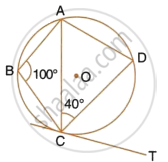Advertisements
Advertisements
Question
If ABCD is a cyclic quadrilateral in which AD || BC. Prove that ∠B = ∠C.
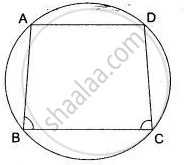
Solution
ABCD is a cyclic quadrilateral.
So, ∠A + ∠C = 180° ...(i)
Since AD || BC
So, ∠B + ∠A = 180° ....(ii)
From (i) and (ii)
∠A + ∠C = ∠B + ∠A
∠C = ∠B
or ∠B = ∠C
Hence proved.
APPEARS IN
RELATED QUESTIONS
PQRS is a cyclic quadrilateral. Given ∠QPS = 73°, ∠PQS = 55° and ∠PSR = 82°, calculate:
1) ∠QRS
2) ∠RQS
3) ∠PRQ
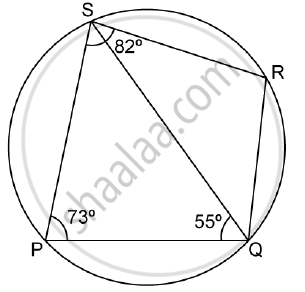
ABCD is a cyclic quadrilateral in which BC is parallel to AD, angle ADC = 110° and angle BAC = 50°. Find angle DAC and angle DCA.
Use the given figure to find:
- ∠BAD,
- ∠DQB.
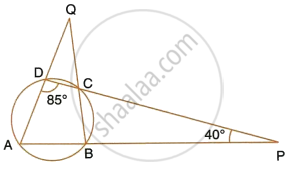
If two non-parallel sides of a trapezium are equal, it is cyclic. Prove it. Or An isosceles trapezium is always cyclic. Prove it.
The bisectors of the opposite angles A and C of a cydic quadrilateral ABCD intersect the cirde at the points E and F, respectively. Prove that EF is a diameter of the circle.
In following fig., O is the centre of the circle, prove that ∠x =∠ y + ∠ z.
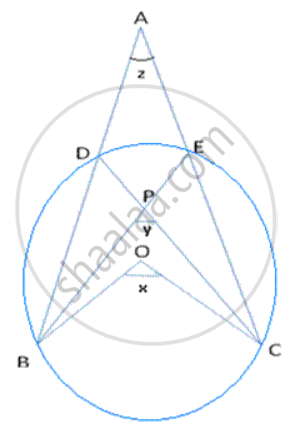
In the figure, ABCD is a cyclic quadrilateral with BC = CD. TC is tangent to the circle at point C and DC is produced to point G. If angle BCG=108° and O is the centre of the circle, find: angle DOC

In the figure, ∠DBC = 58°. BD is a diameter of the circle. Calculate : ∠BAC
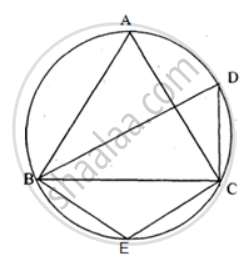
In the given below figure,
∠ BAD = 65°
∠ ABD = 70°
∠ BDC = 45°
Find: (i) ∠ BCD, (ii) ∠ ADB.
Hence show that AC is a diameter.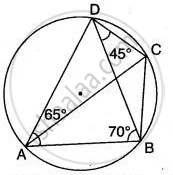
In the given circle with centre O, ∠ABC = 100°, ∠ACD = 40° and CT is a tangent to the circle at C. Find ∠ADC and ∠DCT.
